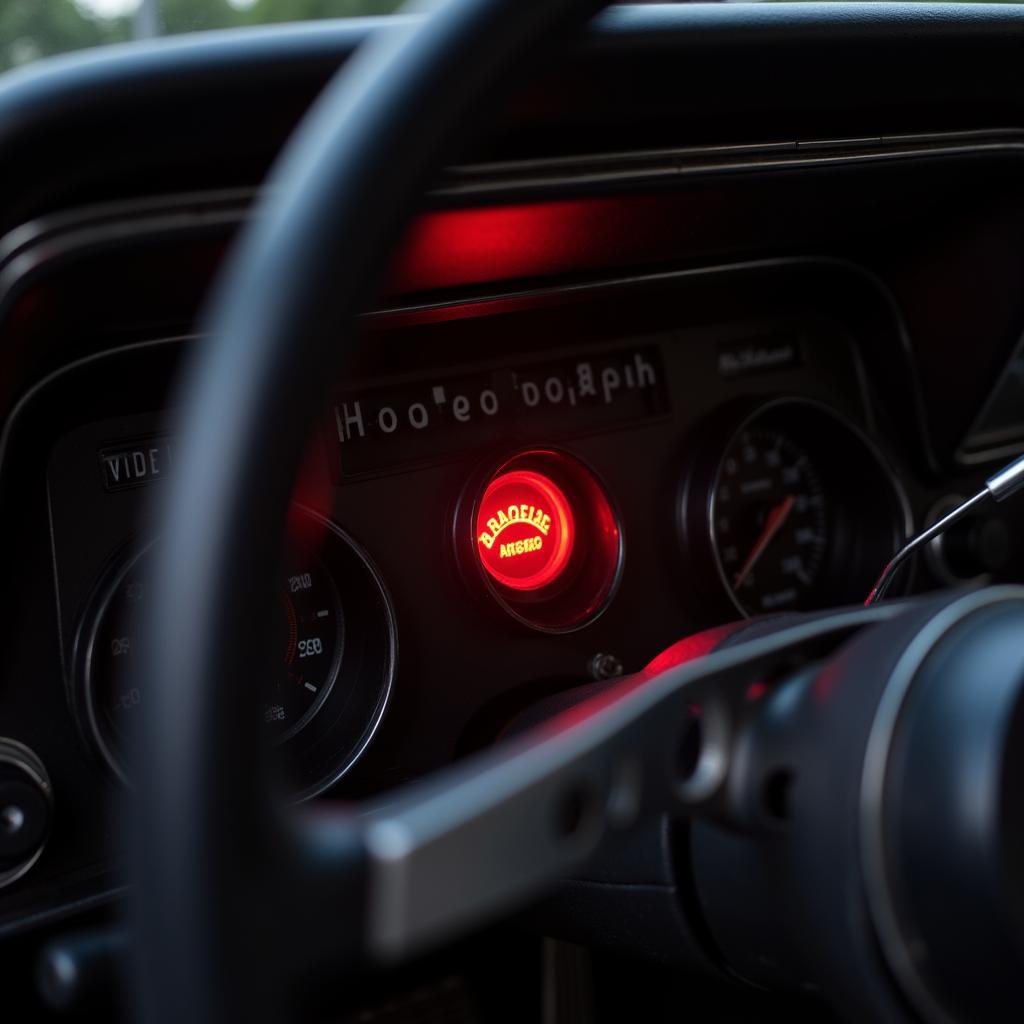Owning a classic car like the 1971 Porsche 913 is a dream come true for many. However, these automotive masterpieces require specialized care and attention, especially when it comes to their intricate systems. A critical aspect of maintaining your vintage Porsche is understanding its braking system, particularly the brake warning schematic. This guide will delve into the complexities of this system, providing you with the knowledge needed to troubleshoot and maintain it effectively.
The 1971 Porsche 913, a legendary model known for its performance and handling, featured a hydraulic dual-circuit braking system. This system, although advanced for its time, can present challenges for modern-day enthusiasts accustomed to more contemporary setups. Understanding its nuances, including the often-overlooked brake warning schematic, is crucial for ensuring both your safety and the longevity of this automotive icon.
Decoding the Brake Warning Schematic
The brake warning schematic is essentially the blueprint of your car’s brake warning system. It outlines the components, their connections, and how they interact to alert you of potential issues. This schematic can be invaluable when diagnosing problems, especially if you’re dealing with:
- Illuminated Brake Warning Light: This is the most common indicator of a brake system issue. However, pinpointing the exact cause requires a deeper understanding of the schematic.
- Low Brake Fluid Level: The schematic helps identify the components associated with brake fluid, allowing you to quickly locate potential leaks or determine if a refill is needed.
- Spongy Brake Pedal Feel: This often suggests air in the brake lines, and the schematic can guide you through the proper bleeding procedure to restore optimal pedal feel.
 Brake Warning Light Illuminated on a Car Dashboard
Brake Warning Light Illuminated on a Car Dashboard
Key Components of the 1971 913 Brake Warning System
Familiarizing yourself with the core components of your 1971 913’s brake warning system is crucial for effective troubleshooting:
- Brake Fluid Reservoir: This reservoir holds the brake fluid and often features a sensor that triggers the warning light if the fluid level drops too low.
- Pressure Differential Valve: This valve plays a critical role in detecting imbalances in the dual-circuit system. Any significant difference in pressure between the circuits activates the warning light, signaling a potential failure in one of the circuits.
- Brake Warning Light Switch: Connected to the pressure differential valve, this switch activates the warning light on the dashboard when it detects an issue.
- Wiring and Connectors: Ensure all wires and connections are in good condition, as faulty wiring can lead to malfunctioning warning lights or inaccurate readings.
Troubleshooting Common Issues
Armed with a basic understanding of the brake warning schematic and its components, you can begin to diagnose common issues:
Problem: Brake warning light stays on even after refilling brake fluid.
Possible Causes:
- Air in the brake lines.
- Malfunctioning pressure differential valve.
- Faulty brake warning light switch.
Solution:
- Check for Leaks: Inspect all brake lines, calipers, and wheel cylinders for any signs of fluid leaks.
- Bleed the Brake System: This process removes air from the brake lines, restoring proper hydraulic pressure. Follow the proper bleeding sequence as outlined in your car’s service manual.
- Inspect the Pressure Differential Valve: If bleeding the system doesn’t resolve the issue, the pressure differential valve may be faulty and require replacement.
- Test the Brake Warning Light Switch: Use a multimeter to test the switch for continuity. If the switch is defective, it needs to be replaced.
Remember, working on a vintage car’s braking system demands meticulous attention to detail and a thorough understanding of its mechanics. If you’re unsure about any step, it’s always best to consult a qualified Porsche mechanic or a specialist familiar with classic car brake systems.
Conclusion
Maintaining the braking system of your 1971 Porsche 913 is paramount for safety and preserving the legacy of this iconic car. While the brake warning schematic might seem daunting initially, understanding its basics empowers you to address potential issues effectively. Regular maintenance, coupled with a keen eye for detail, ensures that your classic Porsche continues to deliver exhilarating drives for years to come.
